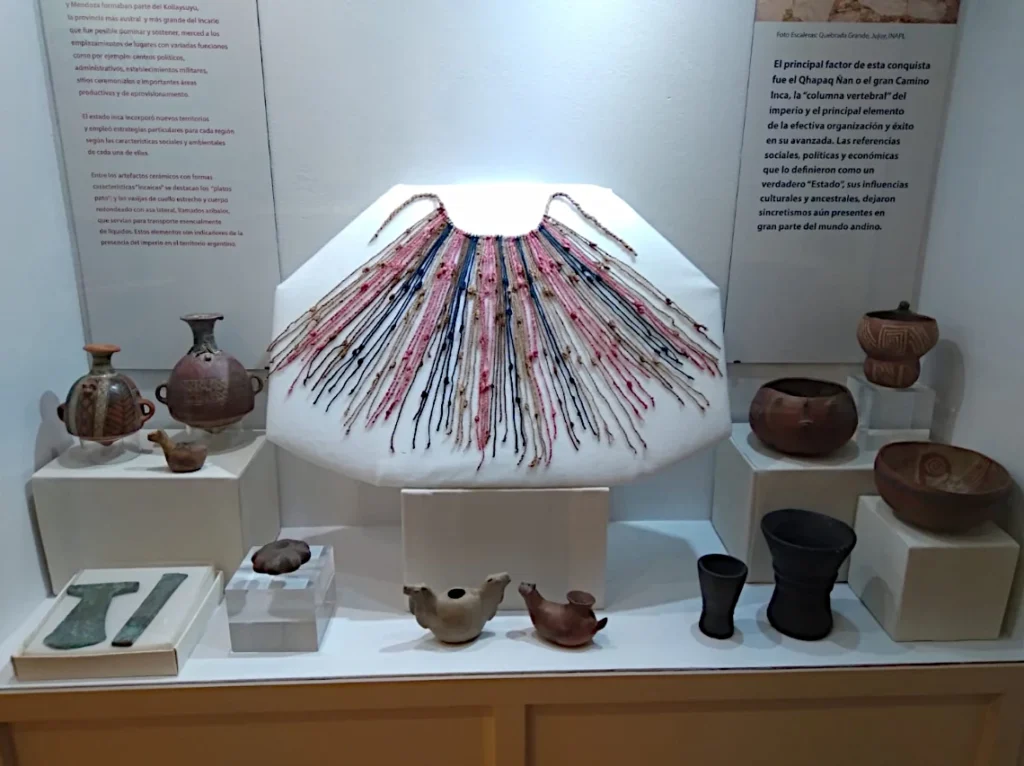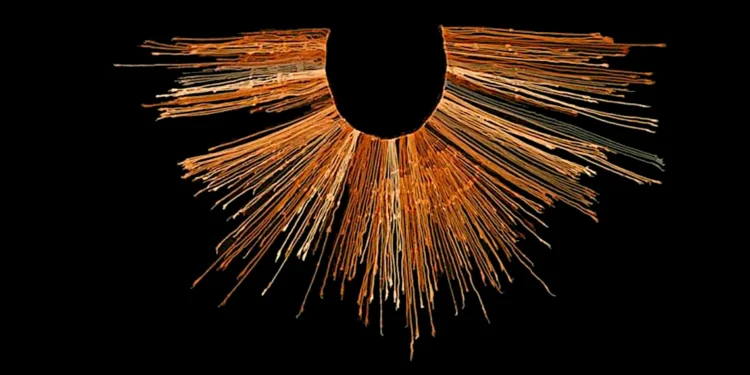Imagine an empire so vast that it stretched from the high peaks of the Andes to tropical jungles and desert coasts. An empire where writing, as we know it, did not exist, but where every knot, every string, and every color held a secret. This was the world of the Incas, and their most fascinating tool for recording stories, counting harvests, and governing millions of people was the khipu. What were these enigmatic objects? How did they work? And, most intriguing of all, what hidden messages have been waiting for centuries to be deciphered? Join me on a journey to the heart of the Inca Empire, where the threads of history intertwine with the mysteries of a civilization that defies our understanding.
What Were the Khipus?
Khipus, also known as quipus, were a unique recording system in the world, made of cotton or wool strings of different colors, with knots that represented information. Although many associate them with accounting, their use went far beyond. The Incas used them to count harvests, tributes, and populations, but they are also believed to have stored stories, legends, and poetry. They were an essential tool for managing an empire that spanned thousands of kilometers, connecting regions, cultures, and people under one system.
“Khipus were not just knotted strings; they were the living memory of an empire that spoke through the fingers of its accountants and sages.”
Can you imagine keeping the accounts of an empire without paper, without pencils, just with strings and knots? What secrets do you think these objects might hide?

Khipus were not just simple strings; they were a complex language that only a few could interpret: the khipucamayocs. Each knot and its position on the string had a specific meaning. For example, figure-eight knots represented units, while simple knots represented tens. The colors of the strings and their arrangement also conveyed information, possibly indicating regions, products, or even emotions. Although thousands of khipus have been studied, their system has not yet been fully deciphered.
What would the khipus say if they could speak? What stories of love, war, or triumph might be waiting to be revealed?
The Khipus and the Majesty of the Inca Empire
The Inca Empire was one of the most impressive civilizations in history, and the khipus were a key piece of its success. Unlike other great civilizations, the Incas did not have an alphabetic writing system. However, the khipus proved they didn’t need one. Thanks to them, the Incas could communicate and manage a territory that spanned six modern countries. With the arrival of the Spanish, many khipus were destroyed, and the knowledge of their interpretation was almost completely lost.

The Mystery That Persists
Today, khipus remain one of the greatest enigmas of archaeology. Although hundreds of them have been found in museums and private collections, their complete code remains undeciphered. Scientists and linguists are using advanced technology to analyze khipus and uncover their secrets. Each deciphered khipu is another piece in the puzzle of Inca history. What would happen if we finally understood them? What would they tell us about the Andean world and its people?
“Khipus are a reminder that the greatness of a civilization is not measured by its technology, but by its ability to create beauty and order amidst complexity.”
Khipus Today
Khipus are not just relics of the past; they are a symbol of the cultural richness of the Andean peoples. In Peru, khipus are recognized as a fundamental part of national identity. Many contemporary artists have used khipus as inspiration for their works, and indigenous communities still preserve traditions related to them, keeping their memory alive.

Khipus are much more than a recording system; they are a testament to the ingenuity and greatness of the Inca Empire. Every knot, every string, is a thread that connects us to a past full of mystery and majesty. Don’t you think it’s fascinating that, even after centuries, these objects continue to challenge our understanding and spark our curiosity?
What did you think of this journey into the world of khipus? Do you think we will ever decipher all their secrets? Leave your opinion in the comments! And if you loved this article, don’t forget to subscribe to receive more fascinating stories about the culture, history, and mysteries of Peru. Share this article with your friends and help us spread the richness of the Andean world!




